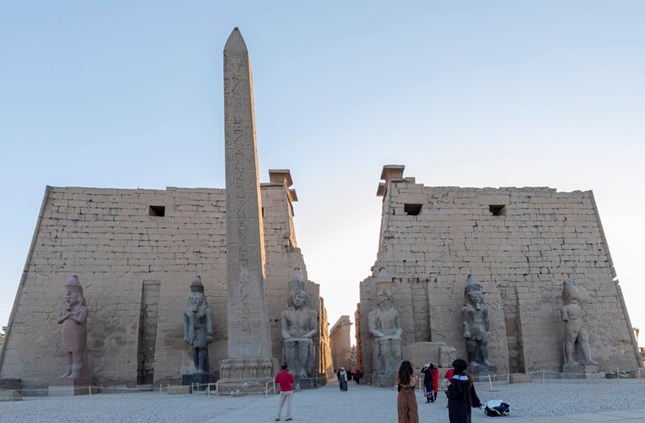The ancient Egyptian called it “Ibt Rasit”, meaning the southern sanctuary, where his wife Mott resides, to distinguish him from the Karnak temple located to the north of it. The credit for its construction is attributed to King Amenhotep III, and dedicated to the worship of “Amun Ka Mut F”, one of the images of the god Amun, to whom Amenhotep III belonged to prove his entitlement to the throne, and recorded this on the walls of the sacred birth room. King Ramses II added an open courtyard and edifice. There are also booths dating back to the era of Hatshepsut and Tuthmosis III. Alexander the Great also left traces of him inside the temple. Luxor Temple is linked to Karnak Temple through the great procession road, which is flanked on both sides by statues of King Nectanebo I in the form of the Sphinx.


